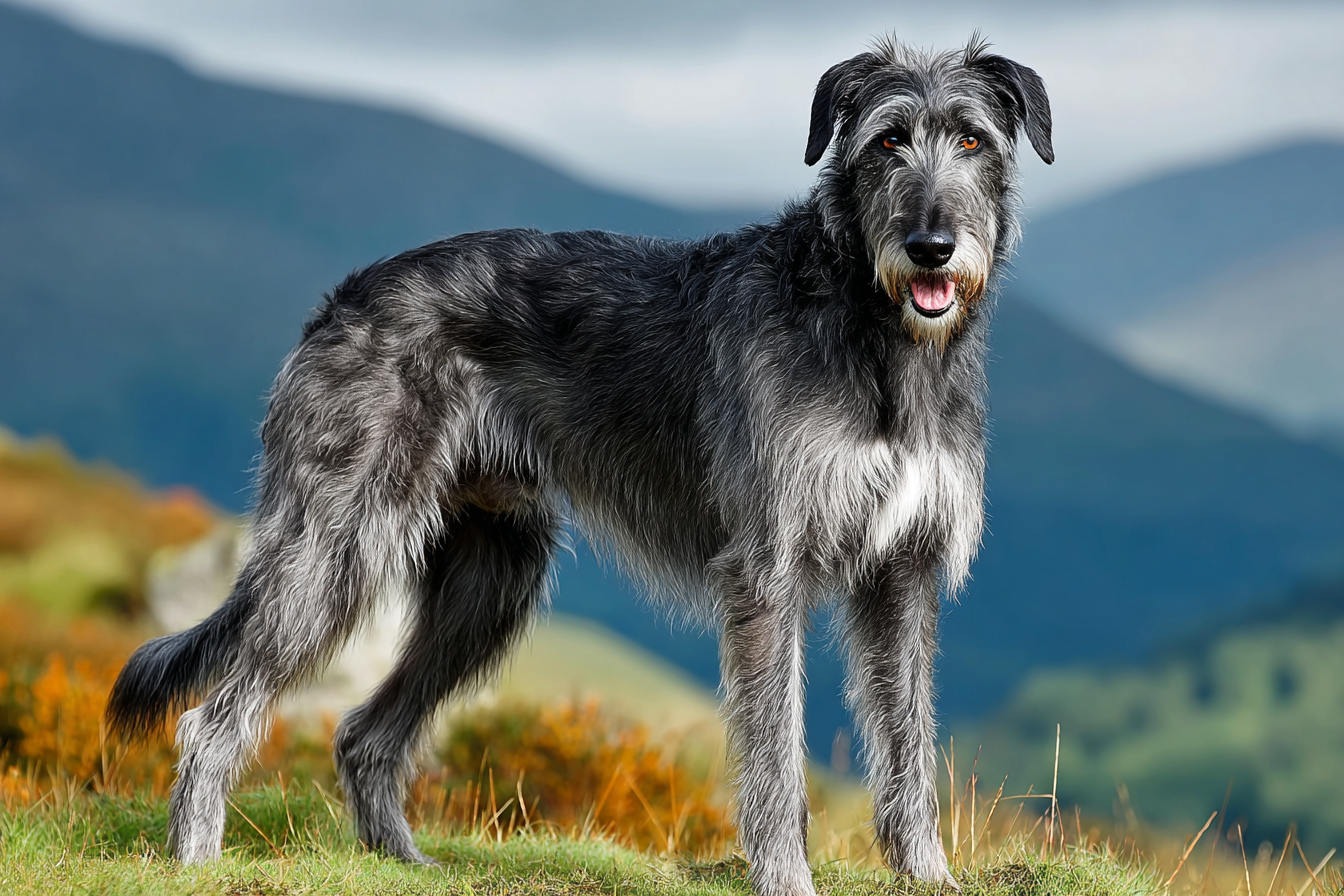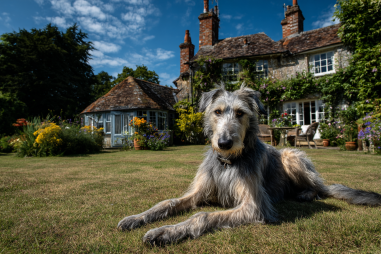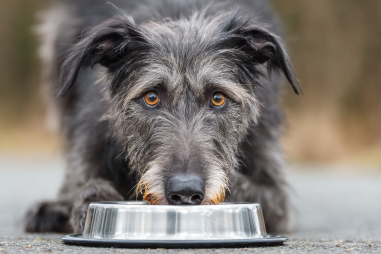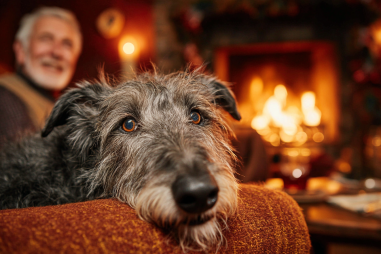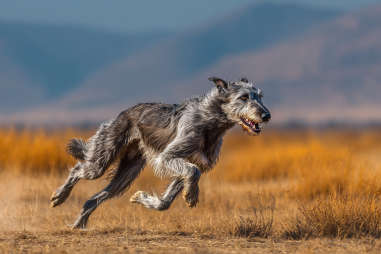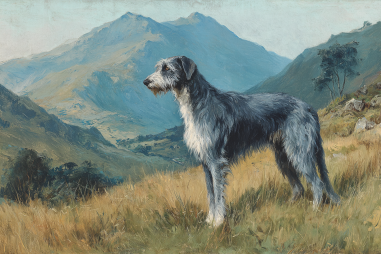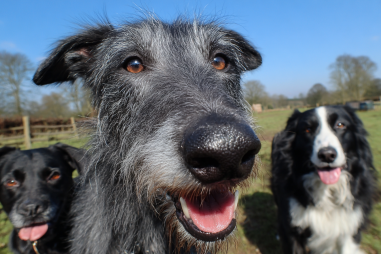The Scottish Deerhound is a majestic breed known for its grace, size, and gentle demeanor. Often described as a “noble giant,” this breed has a rich history tied closely to Scotland’s rugged landscape and hunting traditions. If you’ve ever been curious about what makes the Scottish Deerhound special, you’re in the right place. Let’s explore the distinctive characteristics of this exceptional breed, from its physical traits to its temperament, exercise needs, and how to best care for one in your home.
Introduction to the Scottish Deerhound
The Scottish Deerhound is an ancient breed originally developed to hunt red deer in the Scottish Highlands. This breed’s roots trace back hundreds of years, with its lineage believed to include some of the oldest hunting dogs in the British Isles. Known for their incredible speed and stamina, Deerhounds were prized hunting companions for Scottish nobility and were often referred to as “the royal dog of Scotland.”
Today, the Scottish Deerhound has transitioned from hunting to being a beloved companion and show dog, treasured for its calm nature and striking appearance. Despite their size and hunting background, these dogs are gentle giants with a soft spot for their family members.
Physical Appearance and Size
The Scottish Deerhound is easily recognized by its tall, lean, and powerful stature. They have a wiry, rough coat that offers protection from harsh weather conditions during long hunts. Their coat typically comes in shades of gray, brindle, and fawn, which provide a somewhat antique, wolf-like impression that adds to their dignified look.
When it comes to size, the Scottish Deerhound is one of the tallest dog breeds, with males standing between 30 to 32 inches tall at the shoulder and females slightly smaller, typically 28 to 30 inches. Their weight can range from 75 to 110 pounds, making them substantial but not bulky dogs. Their long legs, deep chest, and narrow frame allow them to achieve impressive bursts of speed—ideal for chasing deer across rugged terrain.
Their head is long and narrow with keen eyes that exhibit intelligence and alertness. Their ears are usually small, folded back, and set high on the head, contributing to their streamlined look. The overall impression is one of elegance and strength combined.
Temperament and Personality Traits
Despite their formidable appearance, Scottish Deerhounds are known for their gentle and affectionate personalities. They have long been described as calm, friendly, and even-tempered, making them great companions for families and individuals alike.
Here are some key temperament traits typical of the Scottish Deerhound:
- Gentle and Affectionate: They form strong bonds with their human family and often show a preference for quiet companionship rather than boisterous play.
- Good with Children and Other Pets: While their size requires supervision around small children, Deerhounds are usually patient and tolerant, getting along well with other dogs and sometimes cats when properly socialized.
- Reserved but Friendly: They are often a little reserved around strangers but rarely aggressive, preferring to observe rather than confront.
- Intelligent and Willing: Deerhounds respond well to positive training but their independent streak means they appreciate gentle, consistent guidance rather than harsh discipline.
This combination of traits makes the Scottish Deerhound a loving family companion with a calm, dignified presence.
Exercise and Activity Needs
Scottish Deerhounds are sighthounds bred for speed and endurance, meaning they require regular exercise to stay healthy and happy. However, their exercise needs should be balanced carefully to match their build and temperament.
Daily walks and opportunities to run in secure, fenced areas are ideal. These bursts of activity allow them to stretch their long legs and expend energy, but Deerhounds are not typically hyperactive and often enjoy lounging around the house afterward.
Because of their strong prey drive linked to their hunting heritage, it’s essential to keep them on a leash or in a safely enclosed space when outdoors. They may chase small animals instinctively if given the chance.
Activities that stimulate both body and mind, such as obedience training, nose work, or gentle agility, can also be beneficial. Though regal and sometimes reserved, Deerhounds enjoy engaging with their owners and learning new things.
Health Considerations
Like all large breeds, the Scottish Deerhound has some specific health concerns to be mindful of to ensure a long and comfortable life.
Common health considerations for Deerhounds include:
- Gastric Torsion (Bloat): This is a serious condition where the stomach twists, common in deep-chested dogs like Deerhounds. Rapid feeding and vigorous exercise immediately after meals should be avoided to reduce risk.
- Heart Problems: They can be prone to cardiomyopathy, a heart muscle disease that requires regular veterinary check-ups.
- Bone and Joint Issues: Due to their size, Deerhounds may develop conditions such as hip dysplasia and osteosarcoma (bone cancer). Ensuring proper diet and weight management can help alleviate some risk.
- General Longevity: The breed typically lives around 8 to 10 years, which is relatively average for large breeds.
Working with a trusted breeder who screens for common health issues and maintaining regular veterinary care are essential steps in caring for a Deerhound.
Ideal Living Conditions
Scottish Deerhounds adapt well to various living environments but thrive best in homes where they have space to move comfortably. A house with a large, securely fenced yard is ideal, giving them room to roam safely without the risk of chasing wildlife.
While Deerhounds can adapt to apartment living if given ample daily exercise, their size and need for outdoor activity mean that they are generally better suited to more spacious living arrangements. They enjoy a calm, quiet household and do best with owners who can provide regular human interaction without overwhelming them.
The breed is sensitive to extreme temperatures. Their wiry coat protects them in cold weather, but they should not be left outside for long periods in harsh climates. Warm bedding and sheltered indoor living are important during extremes of weather.
Getting the Most from Life with a Scottish Deerhound
Owning a Scottish Deerhound is a rewarding experience filled with companionship, dignity, and quiet joy. These gentle giants offer a blend of history, beauty, and loyalty that makes them stand out from other breeds.
Your Deerhound will benefit most from:
- Consistent, gentle training and socialization from a young age.
- Daily exercise that balances their need to run and their calm disposition.
- A spacious, secure living environment with cozy indoor comforts.
- Regular veterinary care to monitor breed-specific health risks.
With these considerations in mind, the Scottish Deerhound becomes more than just a pet—it’s a dignified and loving member of the family who showcases the best of canine nobility and grace.

